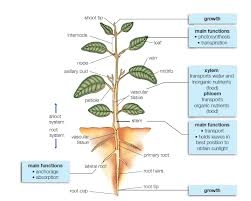 About 40 years ago I attended a lecture on best practices for tree pruning. Strybing Arboretum auditorium was filled because the speaker was a well-known arborist. When pruning side limbs, he said, the cut should be as flush with the trunk as possible. This allowed gravity to assist the tree in quickly closing the wound. I still recall the arborist’s name, but as subsequent research proved his advice incorrect, I won’t mention it.
About 40 years ago I attended a lecture on best practices for tree pruning. Strybing Arboretum auditorium was filled because the speaker was a well-known arborist. When pruning side limbs, he said, the cut should be as flush with the trunk as possible. This allowed gravity to assist the tree in quickly closing the wound. I still recall the arborist’s name, but as subsequent research proved his advice incorrect, I won’t mention it.
Experiments by a university professor, whose name I won’t mention because I don’t quite remember it, showed that trees possess cells that form a barrier to decay just beyond the junction of a side branch and the trunk. You can see this little raised ridge, known as a collar.
Pruning just beyond this collar leaves the protective cells intact. It is true that a callus of bark would quickly form over a flush cut, but rot would permeate the trunk. Some trees became like a glove, with a healthy-appearing exterior but a decaying interior.
In my time as a landscape contractor, I used a variety of procedures that improved on previous methods but were later superseded.
At one time, conventional wisdom held that the planting holes for shrubs and trees should be twice as wide and twice as deep as the root ball. Later, the thinking was revised to twice as wide but only as deep as the root ball. Then the recommendation changed again: to twice as wide but square. The most recent advice I have read suggests digging a saucer-like planting hole that is two inches less deep than the root ball is high.
These revisions happened when people realized that the roots mainly grow in the top 18 inches of soil. Roots require oxygen, and there is little available below that depth. Gardeners and landscapers also realized that disturbing the soil beneath the plant caused the plant to sink later. A certain way to kill almost all shrubs and trees is to plant them with the crown beneath the soil. The square hole was intended to counteract the tendency of plants grown in round containers to keep circling their roots.
Another commonsense practice is to shear a plant before transplanting it. The thinking was that roots damaged by transplanting would have less demand placed on them. But now we know that this thinking is incorrect.
The top most stem of the tree or shrub generates a hormone known as auxin. This hormone inhibits lower side stems or branches, thus keeping the main stem dominant. As auxin flows down the connective tissue, the phloem, it diminishes sugar flow to leaves that, being in shade perhaps, are using more sugar than they are producing. But the major effect is that, upon reaching the roots, auxin greatly promotes root growth.
The roots also generate a hormone, cytokinin, which has the opposite effect. Cytokinin inhibits root growth but promotes shoot and leaf growth. Consequently, the best preparation for transplanting is to shear the plant but leave the main stem intact. The auxin from the main stem promotes root growth, which generates cytokinin, which promotes top growth. These hormones provide the best chance for plants to quickly flourish in their new location.
As we understand more of the inner workings of a healthy plant, we are better able to supply the care it needs. And the more we know, the more we realize how staggeringly complex nature is.
Workshop: Napa County Master Gardeners present a workshop on “Edible Landscape Design” on Saturday, October 5, from 10 a.m. to noon. Location is American Canyon Library,
300 Crawford Way in American Canyon. Design your garden to be both beautiful and edible. Learn what to consider and how to integrate edible plants into your ornamental garden. Bring a detailed plan of your garden to work on with guidance from U.C. Master Gardeners. Learn about books to help you with your design from Napa County Library as part of the Eat, Move, Read program. Seating is limited. Register online at http://ucanr.edu/ucmgnapa or call 707-253-4147.
Garden Tour: Napa County Master Gardeners will host a self-guided garden tour, “Down the Garden Path,” on Sunday, September 22, from 10 a.m. to 4 p.m. Visit seven unique gardens in and around downtown Napa, all maintained by Master Gardeners. Tickets: $25 advance/$30 day of event. For more information and to purchase tickets, visit http://ucanr.edu/ucmgnapa or call 707-253-4147. Find us on Facebook under UC Master Gardeners of Napa County.
Master Gardeners are volunteers who help the University of California reach the gardening public with home gardening information. Napa County Master Gardeners ( http://ucanr.org/ucmgnapa/) are available to answer gardening questions in person or by phone, Monday, Wednesday and Friday, 9 a.m. to Noon, at the U. C. Cooperative Extension office, 1710 Soscol Avenue, Suite 4, Napa, 707-253-4143, or from outside City of Napa toll-free at 877-279-3065. Or e-mail your garden questions by following the guidelines on our web site. Click on Napa, then on Have Garden Questions?